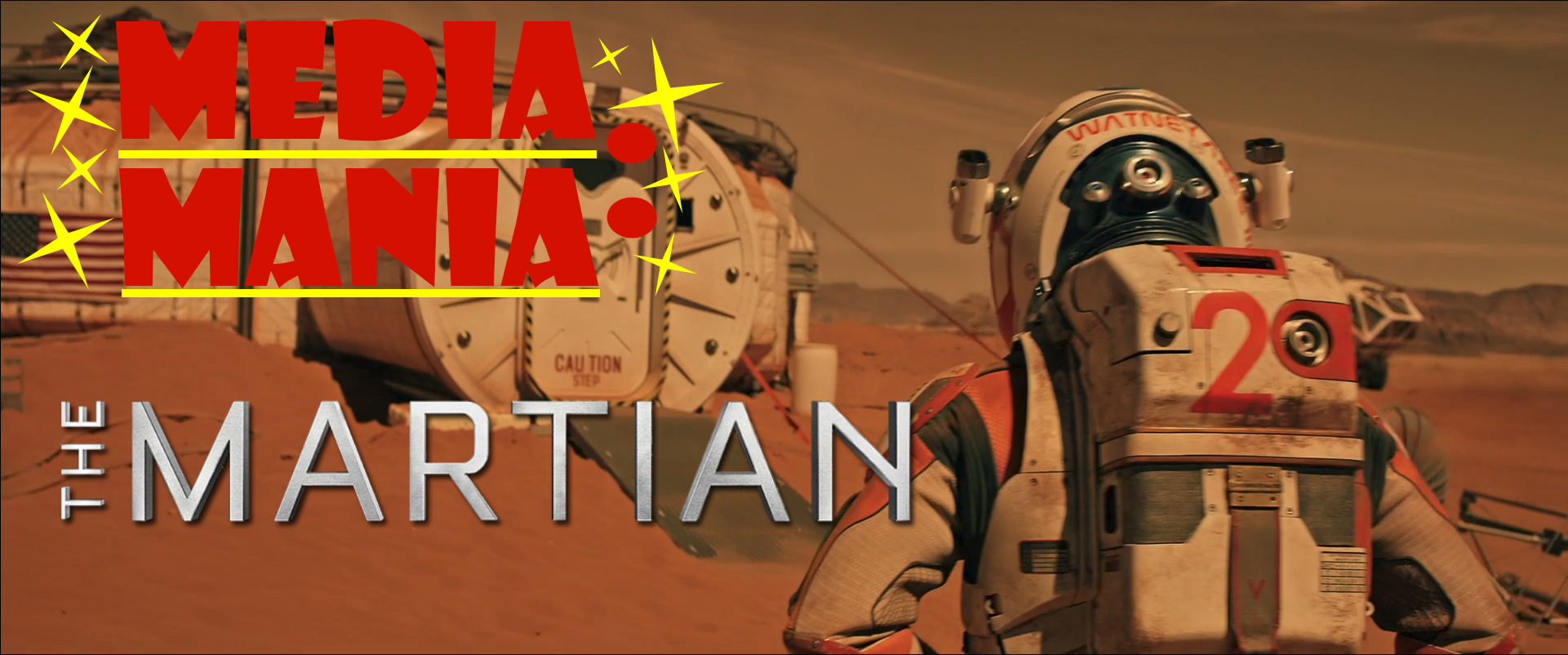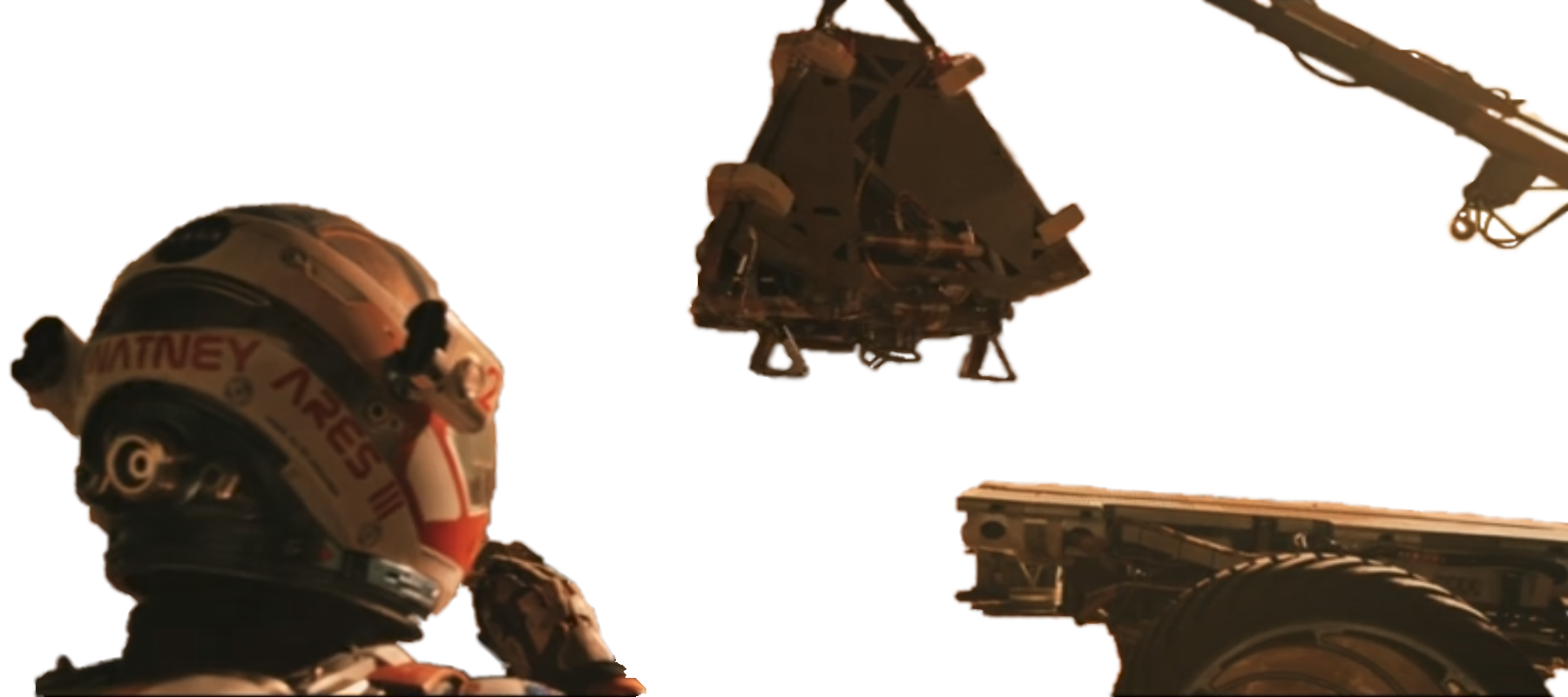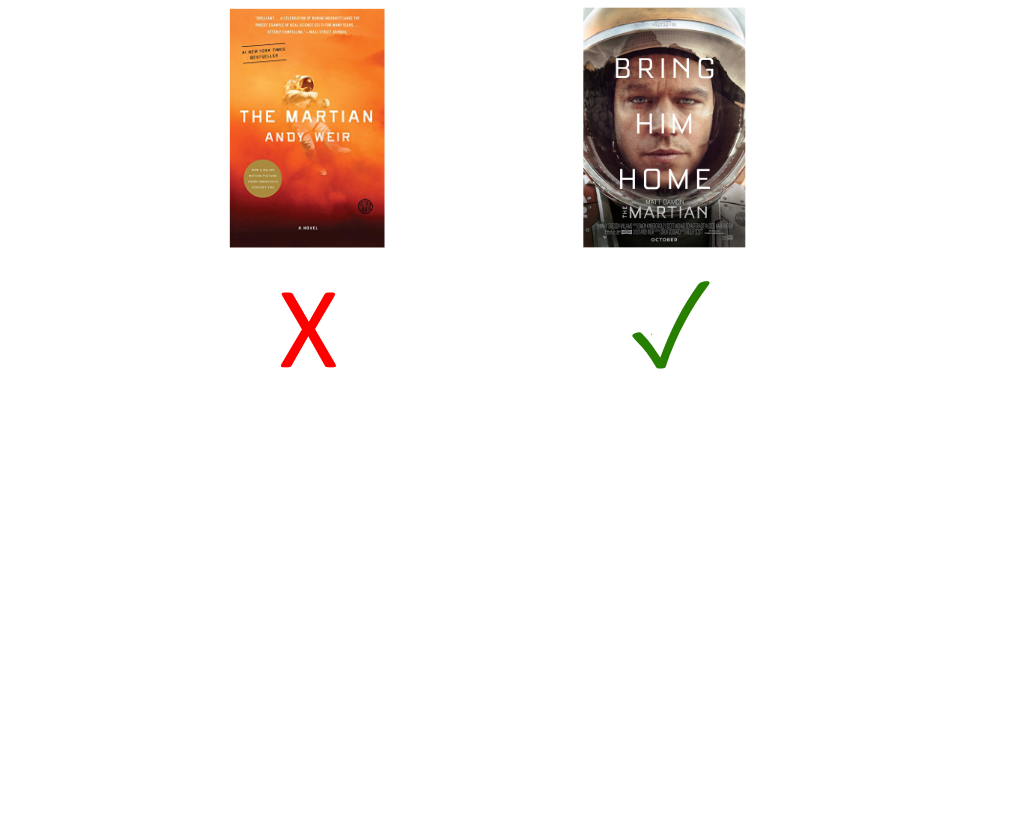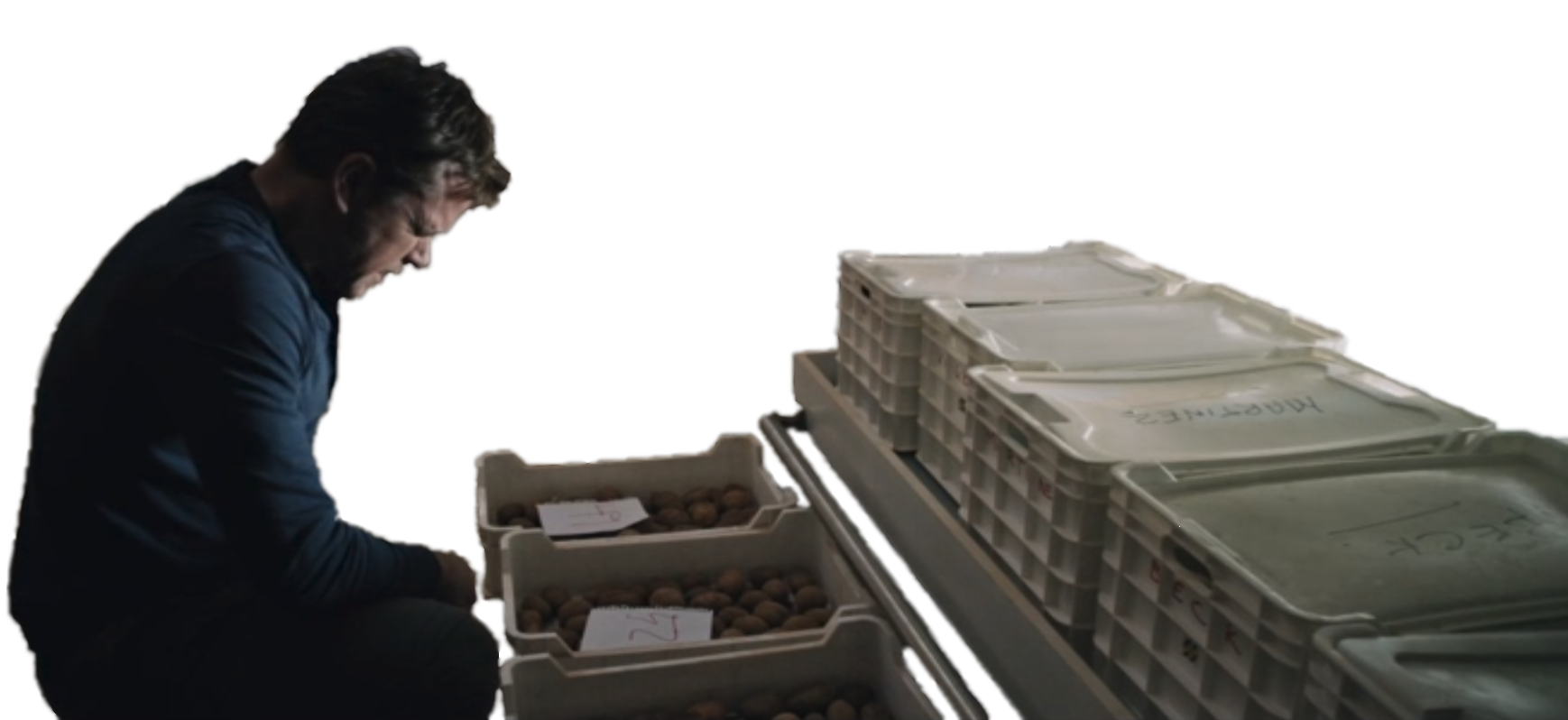Media Mania: The Martian
February 1, 2019
 The Martian blew up in popularity when the movie released, and it is probably one of the only trends I actually genuinely like, but I’m getting ahead of myself. It’s time for another death match for the ages: Saving Private Watney Space Edition!
The Martian blew up in popularity when the movie released, and it is probably one of the only trends I actually genuinely like, but I’m getting ahead of myself. It’s time for another death match for the ages: Saving Private Watney Space Edition!
The story starts as such: Mark Watney, the lowest ranking astronaut of a six-crew, month-long mission to Mars known as Ares 3, is accidentally marooned after an abort mission is called on Sol 6. In the scramble to exit before their probe tips over from 120 mile winds in a raucous sandstorm, he is struck down by debris and presumed dead because of loss of signal on his biomonitor. The remaining crew return to their long range space ship, the Hermes, Watney survives the storm, and we’ve got a plot on our hands.
Obstacles: Quality, Quantity, Creativity, and Severity:
What I consider to be the lifeblood of The Martian, something that transcends the barriers between the book and the movie, is the obstacles that Mark Watney is smitten with throughout the story. Owing to the premise of isolation on Mars, the Martian doesn’t have a complex character roster or character dynamic involved, so the weight of the plot rests solely on the creativity of the problems and solutions that come up in surviving on the planet itself. Without question, Andy Weir absolutely delivered a masterpiece in this department. The food shortages right off the bat before any rescue could be managed and subsequent growth of potatoes inside the pressurized Hab, digging up the RTG capsule to warm up the rover while conserving power on long trips, the Richard Purnell (slingshot) maneuver to expedite the rescue mission… The list goes on and on, and the beautiful thing is, they’re all valid and engaging issues with crafty solutions that hold a decent scientific feasibility. Implementing all that in a fictional, sci-fi future is just so damn satisfying.
It’s a remarkable feat for a story to engross me in a narrative by unique elements like this, and frankly that’s a refreshing feeling. Watney venturing out to find the long-dead Pathfinder probe, then finding a viable means of using the forty-year-old technology to reconnect his communication flow with NASA? Hands down, my favorite part of this whole tale.
On the other hand, not all obstacles are created equal. While the movie was equipped with a ton of the ones in the novel, it favored more the highlight reel, and made the rather wise decision to omit some of the more mundane issues the novel introduced. While, the book certainly had the advantage of regaling me with every single detail of any given problem, it swiftly became an exercise in agony when we spent full chapters covering the progress of a malfunctioning water reclaimer or the “hydrogen cleanings” to clear the air of the Hab. It’s not a matter of personal preference, it’s about being bogged down with tedium. Sure, it becomes a process to resolve, but there isn’t a fundamental fixation on this issue that changes the state of circumstances for Watney afterwards, when all is said and done.
The worst offenders of this tendency in the book, though, lie in the climax. In the movie, he takes the long trip on a rover and, after a few choice scenes to depict the hardships and the passage of time as he sleeps at the tires while the solar panels charge, we’re off again. It’s nice, clean, and focused effort. The real challenge has yet to come when he must rip apart the Ares 4 MAV and be launched at a velocity that will make him eat 12 g’s worth of acceleration to stand a shot at reaching the Hermes. The setup is already there, and in fact, the lack of other problems prior to shot time is an aid in the tension, because the audience (as well as Watney) is wholly engaged in the anticipation of that fateful hour.
The book literally just stuffs another hundred pages worth of problems to make a sandstorm stand in the way during the trip. It starts with Watney putting his power drill in the wrong place at the wrong time which ends up frying the Pathfinder’s electronics and severing his communication outlet with NASA for the 56 sol journey ahead of him, just in time for him not to learn about the existence of an impending sandstorm that saps his power supply as he travels to the Ares 4 site. All the while, Watney keeps sending NASA rock-place Morse code messages that they can see on their satellites to check on his status. He gets lost, starts noticing the dimmer atmosphere, the dip in juice each day for his solar panels, and course-corrects by driving farther south to avoid the worst of it. And thus the sandstorm becomes a nonentity from there on. Oh, and also the rover flips over on Sol 497, just for kicks and to pad onto the word count.
Needless to say it’s superfluous. The busyness of this section detracts from the proper emphasis of the last, greatest challenge on the impending launch, which is all or nothing in bringing the stranded astronaut home. Movie Martian learned from these mistakes and scrapped this subplot in its entirety.
Although, where the movie corrects some mistakes by simplifying the format of all the complications on Mars, it does occasionally slip up and simplify things to a fault.

Wait a moment, is that a fucking crane machine? On a Mars rover? Holy mother of convenience! What an oddly specific piece of equipment to have available for a geological mission on Mars! And also, let’s not forget the true casualty of the Martian movie, Rover 1. Cause of death: Absolute decimation by a sandstorm that couldn’t so much as tickle the Hab sitting right next to it because something something plot device. Nevertheless, these infractions are relatively small and don’t cut into the meat of the story as deeply as the book sometimes does. Movie magic takes this round.

Viewing Experience & Story Format:
Let’s talk about the meat of this story for a moment. Some might say that would be the the premise (Watney continual struggle to survive Mars alone), or maybe the outside effort congregating for his rescue, but what I’m talking about is something even more prevalent than that.
I’m talking about the logs.
Without knowing what public opinion of this e-diary-esque storytelling format is, I think it’s safe to say it has a profound impact on the experience of it. Of course this is more so directed at the book’s style than the movie’s, which, while including vlogs occasionally, are not as dominant and are fundamentally straying less from the tradition format. What I mean is a vlog in a movie is basically an avenue to have a character talk aloud while no one’s around to impart important information (plot or character related) to the audience. For a book, that’s literally just narration. A log in a book is often supposed to be read as an artifact of some sort within the story, a written report of some relevant or ongoing events, details, persons of contact to the character we are following that add an extra dimension to the experience. In science fiction, that kinda stuff is quite popular if not a staple in some series. One example that comes to mind is Orson Scott Card including emails, letters, and even the title of attached documents at the end of every Ender’s Game chapter.
So to be clear, this is not a foreign concept to me. Yeah, it still sucks for the Martian though.
The man is alone on his own god damn planet! How is it a fun reading experience to read page after page of his mission logs? Sure, Watney has the type of character in him that doesn’t shy away from expressing his personality through these logs, but this means everything on Mars happens in between each passage of text. Let me tell you, that kills intrigue, tension, character investment, the overall general reading experience, just to name a few.
I’m fully aware of the circumstances of how Weir wrote his book. It was never meant to be a story to appeal to a large audience, and the entire point of it was to make a hyper-realistic, detail-dense adventure to focus on the technical process of problems and the ingenuity of some solutions, but to go through the entire novel and not have any palpable, fully immersive scenes on Mars itself is a disservice to the reader. This log-by-log structure reduces Watney’s adventure into a monotony of his reflection of what has happened before, and observation of what needs to be done next. That’s literally it. There, I’ve laid out the entire 369 page book to you.
Forget passive writing, the Martian becomes the pinnacle of summary. As much as I despise the “show, don’t tell” philosophy that so many writers swear by as the infallible ingredient to good writing, the idea holds some weight. There’s a threshold to how much mileage a log format can stand as a peer to traditional form of prose. There’s simply not enough of dynamism and dimension in this style to hold the hefty tale of the Martian. It’s not Weir’s writing that fails him, but his faith in the logs as a storytelling device.
Watney never being depicted in scene until he’s being launched out on the MAV 25 pages before the end just doesn’t translate to an immersive experience. An overwhelming majority of these logs are merely a transcription of his technical planning process, or him bitching/panicking about some new and more impossible problem.
In essence, the log becomes a person, with which Watney engages with. A neat feature, yes, but being the only point of contact we learn about Watney muddies the experience. People change how they act and feel in front of people, even in close company. Watney, being completely starved of human contact, records ongoing reports initially what could be assumed to be soliloquies into the electronic abyss, but is more a collection of what is more than likely the final testament of his existence. NASA would eventually retrieve these logs some day and of course it’s going to weigh on Watney’s mind and influence what he does and does not share.
Switching over to the movie, we have a compromise. Those vlogs do have some expositional aid for the viewers, but the movie realizes that this is but a small part of the overall picture of the story. We don’t just cut to black every time Watney turns off his camera. One of my favorite scenes in the movies was born out of this choice to expand on some of the candid moments on Mars.

At about 70 minutes in, Mark Watney is counting his potato stocks while another sandstorm is going on. At this point airlock 1 has already blown up, and his makeshift seal from a plastic canvas and duct tape is flapping in and out with the wind, and not blocking out the whistling and rumbling outside. It’s a short clip, but absolutely brilliant in portraying the terrifying fragility of Watney’s situation and the psychological strain it’s putting him through. The brutal Martian atmosphere is closer than it has ever been to sucking him out of the Hab and rupturing every organ in his body, and it’s actually breaking him down. The challenge of just getting through the single night of bad weather is brimming with tension and emotional vulnerability that carries over to the viewer masterfully.
Or, the scene reveal of Watney’s journey to Pathfinder, which is curated into a plot twist for the viewer as we discover it from NASA’s perspective rather than in the book where Watney just straight up has the idea and follows through with it. Or, the very beginning, where we follow Watney stumbling his way back to the Hab and being forced to perform his own surgery to remove a shrapnel from his body.
The movie unilaterally outshines the novel in this department, taking the good that can be found within the novel and lifting it up to great.

Touchdown Confirmed:
When it comes down to it, we have three entities:
1. NASA as they identify Watney’s survival and subsequently organize and attempt several avenues of saving his life.Sometimes the reading the thoughts to solve problems gets old. Thinking through time and text.
2. The crew, as they journey back from Mars and ultimately become the deciding chip for forcing NASA’s hand in which plan the Taiyang Shen probe would be used
3. And of course, Watney himself, as he struggles to keep his limited resources and hospital environment operating smoothly well beyond its intended lifespan.
Every aspect of this comes together neatly, particularly the Hermes to make a satisfying and practical climax. I mean, what’s better formulation of macro events than having the Ares 3 crew, who had left Watney behind on Mars alone to begin with, become the missing piece NASA needed to reach Watney in time. This is the thing I admire greatly about the Martian, in both media—the discipline and intelligence woven into the story’s structure to bring every key aspect together with a credible role in the finale. It’s a perfect demonstration of a clear vision of what the story is about and how it should all end.
Even though the movie came to me to be the better contender, it can’t be stressed enough that the book is still a fantastic journey and truly an icon for 21st century’s science fiction. The fact that NASA helped heavily on the movie production itself is a mind-boggling fact that to me exemplifies the true power of fiction to generate inspiration, education, and collaboration into the forefront of our lives.
Awesome!
❤️ Jamie want to meet you! Click Here: https://clck.ru/ZBXkg ❤️
❤️ Molly want to meet you! Click Here: http://inx.lv/p0Df ❤️
❤️ Gloria want to meet you! Click Here: http://inx.lv/p0Df ❤️
❤️ Vickie want to meet you! Click Here: http://inx.lv/p0Df ❤️
❤️ Paula want to meet you! Click Here: http://inx.lv/p0Df ❤️